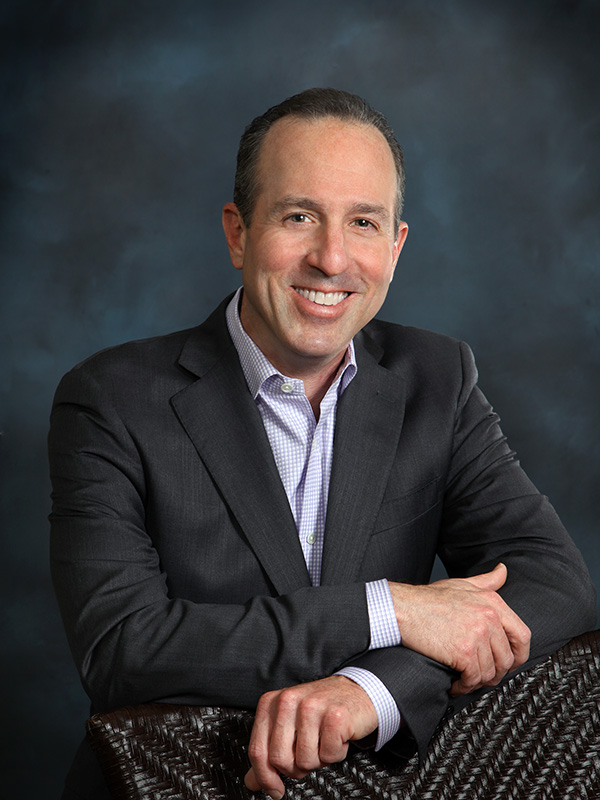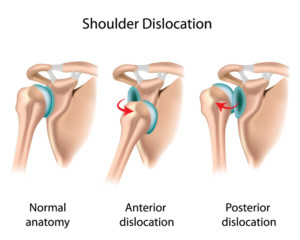Dislocated Shoulder Doctor

Are you an athlete who participates in contact sports? If so, you may be at risk of sustaining a shoulder dislocation. A shoulder dislocation, also called shoulder subluxation can occur from a sports injury, traumatic blow to the shoulder or from continuous overhead movements. Dislocated shoulder doctor, Dr. Mark Getelman provides diagnosis and both surgical and nonsurgical treatment options for patients in Los Angeles who have dislocated their shoulder. Contact Dr. Getelman’s team today!
How a Dislocated Shoulder or Shoulder Subluxation Causes Shoulder Instability
The shoulder is the most mobile joint in the human body, allowing a wide range of motion. The shoulder’s range of motion can become restricted when a shoulder dislocation, also called shoulder subluxation, occurs from a sports injury, traumatic blow to the joint or from continuous overhead movements. A dislocated shoulder is marked by the displacement of the ball (humerus head) and the socket (glenoid). This injury often causes recurrent shoulder instability, a condition that occurs when the soft tissues surrounding the shoulder do not function properly and fail to hold the ball and socket in place. Dr. Mark Getelman, orthopedic shoulder specialist located in the Van Nuys, Westlake Village, Thousand Oaks and Los Angeles,, California area, strives to return patients to the activities they love after suffering a dislocated shoulder.
In order for a shoulder dislocation to occur, the soft tissues (ligaments, tendons and joint capsule) around the shoulder joint must become damaged. Typically, the labrum tears and allows the ball to dislocate. A dislocated shoulder is quite common in athletes involved in contact sports, such as football and hockey. Athletes involved in baseball and tennis are also prone to this shoulder injury from the constant repetitive overhead arm movements involved in the sports.
If the labrum tears and does not heal, the shoulder may develop recurrent shoulder dislocations and/or pain during certain activities. Older patients who experience a dislocated shoulder are at a lower risk of developing ongoing shoulder instability compared to younger patients.
Dislocated Shoulder / Shoulder Subluxation Symptoms
Common dislocated shoulder symptoms include significant shoulder and arm pain, shoulder weakness, arm numbness and a limited range of motion. Patients may also experience difficulty or the inability to move the arm, a “popping” sensation or a visual deformity of the shoulder joint from the ball and socket becoming separated.
Dislocated Shoulder / Shoulder Subluxation Diagnosis
Prompt medical care should be sought if a patient experiences a dislocated shoulder. Initial medical care is focused on reduction, or returning the shoulder to its normal position. The shoulder may return to its normal position without medical care in certain patients. When the shoulder does not return to its normal position on its own, the joint will need to be manually reduced by a physician. This is done by manipulating the shoulder and placing the ball back into the socket.
Dislocated Shoulder / Shoulder Subluxation Treatment
Once the dislocated shoulder is reduced, either by itself or manually, a sling is typically applied and the patient is advised to seek specialty care. Dr. Getelman will assess the injury, examine the shoulder joint and obtain X-rays and/or MRI scan. Specific tests used to determine the extent of shoulder instability are the apprehension and relocation test for anterior instability and posterior load and jerk test for posterior instability and the sulcus sign for multidirectional injury.
The severity of shoulder instability, previous shoulder dislocations, patient activity level and patient age are all determining factors in the proper treatment plan set forth by Dr. Getelman.
Non-Surgical
A dislocated shoulder may be treated with a combination of ice, rest, immobilization in a sling and therapy for several weeks following the injury. Physical therapy is often recommended by Dr. Getelman and his orthopedic team to help strengthen the shoulder joint and restore range of motion.
Surgical
The treatment for recurrent shoulder instability is usually surgical especially for younger patients. Surgery for a dislocated shoulder and shoulder instability is aimed at repairing the damaged labrum, capsule and ligaments. In many cases, this can be completed by Dr. Getelman arthroscopically as an outpatient procedure. The surgery is performed with a miniature, lighted scope and small instruments introduced into the shoulder joint. Tiny anchors with sutures attached are inserted precisely into the socket of the shoulder, and the torn ligaments are reattached to the bone. Complete healing from this procedure takes approximately four to six months for most patients.
Shoulder Dislocation FAQ
What is the difference between shoulder dislocation and shoulder separation?
The injuries are quite distinct. In the case of a dislocated shoulder, after a fall, a sports injury or hard blow to the shoulder, the top of the arm bone pops out of the shoulder socket. A separated shoulder, on the other hand, happens when a fall or a hard strike causes a tear to one of the ligaments connecting the collarbone to the shoulder blade. Because the collarbone is no longer securely in place, the collarbone might also move out of position and press against the skin near the top of the shoulder.
What is the difference between shoulder subluxation and shoulder dislocation?
A subluxation is a partial dislocation of the shoulder joint and is attributed to shoulder instability. It can occur in one or multiple directions. If it’s in one direction, it is most frequently to the front or anterior, often referred to as anterior instability, which is when the arm or humerus bone pops out the front of the joint, anterior to the glenoid socket. This condition has various causes: accident or traumatic injury or repetitive use.
Why does my shoulder dislocate easily?
If the labrum, ligaments and capsule around the shoulder are torn or become loose, dislocations can happen repeatedly. There are three ways that the shoulder can become unstable — a dislocation from a trauma or severe injury, repetitive strain (some individuals have looser ligaments in their shoulders, the result of repetitive motion) or multidirectional instability (these individuals simply have naturally loose ligaments and can develop symptoms of instability without specific trauma).
What causes shoulder dislocation?
An acute trauma or fall onto an outstretched arm or repetitive activity that pulls the shoulder backward or rotating it too far can cause the humerus (the ball of the upper arm bone) to pop out of the socket (otherwise known as the glenoid). If you’re an athlete who plays sports that involve a lot of overhead motion — such as volleyball, baseball, swimming and tennis — or your profession requires you to lift objects over your head (a professional house painter, for example), you are at risk, because over time, the repetitive motion over the head can weaken and stretch the shoulder capsule and ligaments. Another factor is genetics. If you naturally have loose ligaments in the shoulder area, you may not have the support to keep the ball of your shoulder in its socket. Therein lies the risk of shoulder instability.
What does shoulder dislocation feel like?
The most common symptoms are pain in the upper arm and shoulder (which gets worse during attempts to move it), decreased motion, swelling, numbness and weakness, bruising and deformity of the shoulder (the result of a forward dislocation).
How to prevent, treat, fix, stop shoulder dislocation
Prevention: Try to stay in good physical shape. That means strengthening the back muscles, the neck, arm and of course, shoulder. Perform stretching and range-of-motion exercises, particularly after exercising, when the muscles are warmed up. Do not lift or carry objects that are too heavy for you. Repeated arm movements can injure the tendons or bursa (a lubricated cushion located at friction points between bone and surrounding soft tissue). Alternate arms when doing repetitive activities such as gardening or cooking. If you’re doing activities that involve raising your arms to the side or overhead (like painting) for long periods of time, take frequent breaks.
Surgery: Injury extent can be confirmed by an MRI and, if bone loss may be suspected, a CT scan. In situations where too much damage has occurred, the only way to restore shoulder stability and range of motion is shoulder stabilization surgery. If there is a labral tear without bone loss, orthopedic surgeon Dr. Mark Getelman will perform arthroscopic shoulder surgery. Dr. Getelman also developed and published “Hospital-Corner repair” for shoulder instability, which used double-loaded suture anchors in the glenoid. This surgical technique applies the same technique of folding and tucking a flat sheet under a mattress to form the “hospital corner,” except in this case, it created a fold to protect the primary labral repair.
How long does it take a shoulder dislocation to heal?
Depending on factors such as how serious it is, the person’s age and whether this is the first dislocation, healing time could be 6 weeks or more. Once the dislocation is diagnosed, the doctor will likely prescribe ice packs to control swelling and a few to several weeks immobilization of the arm and shoulder in a sling. He or she may perform a reduction — use a technique to move the shoulder back into its socket. If the shoulder continues to dislocate, the doctor may recommend surgery.

